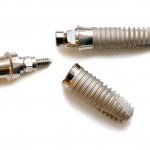
Surface quality has been proposed as one of a number of factors important in establishing reliable osseointegration in dental implants. Anodising the surface of implants is one method currently used to modify the surface layer.
The aim of this review was to compare the survival rate of dental implants, marginal bone loss (MBL), and post-operative infection of turned and anodised-surface dental implants.
Methods
Searches were conducted in the PubMed/Medline, Web of Science, the Cochrane Oral Health Group Trials Register, www.clinicaltrials.gov ; www.centerwatch.-com/clinicaltrials; and www.clinicalconnection.com databases. This was supplemented by hand searches of the journals,British Journal of Oral and Maxillofacial Surgery, Clinical Implant Dentistry and Related Research, Clinical Oral Implants Research, European Journal of Oral Implantology, Implant Dentistry, International Journal of Oral and Maxillofacial Implants, International Journal of Oral and Maxillofacial Surgery, International Journal of Periodontics and Restorative Dentistry, International Journal of Prosthodontics, Journal of Clinical Periodontology, Journal of Dental Research, Journal of Craniofacial Surgery, Journal of Cranio-Maxillofacial Surgery, Journal of Dentistry, Journal of Maxillofacial and Oral Surgery, Journal of Oral Implantology, Journal of Oral and Maxillofacial Surgery, Journal of Oral Rehabilitation, Journal of Periodontology, Journal of Prosthetic Dentistry, Oral Surgery Oral Medicine Oral Pathology Oral Radiology and Endodontology and Quintessence International.
Studies (randomised or not) comparing implant failure rates, MBL and/or post-operative infection in any group of patients receiving turned (machined) and anodised-surface (TiUnite) implants, both from the same implant manufacturer were considered. Three reviews independently selected studies with at least 2 reviewers abstracting data. Study quality was assessed using the Newcastle-Ottawa Scale (NOS). Implant failure was defined as complete loss of the implant. Random effects meta-analysis was carried out.
Results
- 38 studies consisting of 4 randomised clinical trials, 6 controlled clinical trials, 5 prospective studies and 23 retrospective analyses were included.
- 23 studies were considered to be of high quality, 15 of moderate quality.
- Meta-analysis of all 38 studies demonstrated that the insertion of turned implants statistically affected the implant failure rates in comparison with implants with an anodised surface. RR = 2.82 (95% CI; 1.95 -4.06, P < 0.00001).
- For implants in maxilla (6 studies), RR= 2.54 (95%CI; 1.32-4.89)
- For implants in mandible (12 studies), RR= 2.51 (95%CI; 1.27-4.97)
- When the 23 studies with six or more points in the NOS were pooled implant failure rates in comparison with implants with an anodised surface. RR = 3.31 (95% CI; 2.18-5.02, P < 0.00001)
- There were no apparent significant effects of turned implants on the MBL Mean difference [MD] = 0.02, (95% CI;0.6 – 0-20)
Conclusions
The authors concluded: –
Within the limitations of the existing investigations, the present study suggests that turned implants have a statistically higher probability to fail than anodised surface implants, regardless whether the implants were placed in maxilla or mandible, or when studies having or not having high quality scores were pooled together. There were no statistically significant effects of turned implants on the MBL in comparison with anodised implants. A comparison of post-operative infection between the implant types was not possible, due to lack of enough information. The reliability and validity of the data collected, the limitations of the quality assessment tool and the potential for biases and confounding factors are some of the shortcomings of the present study.
Comments
This review is one of a series of reviews from these authors and follows s similar methodology to the other reviews. The search strategies are extensive but the decisions to include a wide range of study designs in meta-analysis does raise concerns, as it is well known that retrospective studies are more prone to bias that prospective studies with randomised controlled trials being the most robust. 60% of the studies included in this meta-analysis are retrospective and the analyses also demonstrate a high degree of heterogeneity.
The 2014 Cochrane review by Esposito et al (Dental Elf – 25th Jul 2014) which was restricted to RCTs only included 27 trials and concluded,
Based on the results of the included RCTs, we found no evidence showing that any particular type of dental implant had superior long-term success. There was limited evidence showing that implants with relatively smooth (turned) surfaces were less prone to lose bone due to chronic infection (peri-implantitis) than implants with much rougher surfaces (titanium-plasma-sprayed). These findings were based on several RCTs, often at high risk of bias, with few participants and relatively short follow-up periods.
Links
Primary paper
Chrcanovic BR, Albrektsson T, Wennerberg A. Turned versus anodised dental implants: a meta-analysis. J Oral Rehabil. 2016 Jun 13. doi: 10.1111/joor.12415. [Epub ahead of print] Review. PubMed PMID: 27295394.
Other references
Dental Elf – 25th Jul 2014

Turned or anodised-surface dental implants-which have better survival? https://t.co/fqV5BsCHrD
Survival rates of turned and anodised-surface dental implants? https://t.co/fqV5BsCHrD
Do anodised-surface dental implants have better survival rates? https://t.co/fqV5BsCHrD
Don’t miss – Dental implants: survival rates of turned and anodised-surface dental implants https://t.co/fqV5BsCHrD